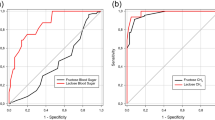Abstract
Clear fluids high in fructose (e.g., apple juice) have been incriminated for symptoms of chronic non-specific diarrhoea (CNSD), in particular in children 1–4 years of age. H2 breath tests were performed, after ingestion of fructose (1 g/kg), in 15 patients referred with CNSD and 35 controls. All 15 CNSD children (100%) had breath peak H2 of ≥20 ppm versus 49% of the 35 controls (P=0.0005). Median peak H2 in CNSD (90 ppm, range 31–136) was significantly higher than in controls (20 ppm, range 1–139) (P<0.001). Orocoecal transit time in children with positive tests was similar in both groups. Similary, median H2 increases during the test period had the same distribution. We demonstrated fructose malabsorption in CNSD, but found a great overlap with the control group. Our results strongly discourage the use of fructose breath H2 tests in children suspected of CNSD. A positive test has no diagnostic value and a negative test has no clinical implications.
Conclusion
For clinical practice, we suggest a dietary history and a trial of appropriate measures in infants with chronic nonspecific diarrhoea, instead of performing the fructose H2 breath test.
Similar content being viewed by others
Abbreviations
- CNSD :
-
chronic non-specific diarrhoea
- OCTT :
-
orocoecal transit time
References
Bond JH, Levitt MD (1975) Investigation of small bowel transit time in man utilizing pulmonary hydrogen (H2) measurements. J Lab Clin Med 85: 546–555
Burant CF, Takeda J, Brot-Laroche E, Bell GI, Davidson NO (1992) Fructose transporter in human spermatozoa and small intestine is GLUT5. J Biol Chem 267:14523–14526
Cohen SA, Hendricks KM, Eastham EJ, Mathis RK, Walker WA (1979) Chronic nonspecific diarrhoea: a complication of dietary fat restriction. Am J Dis Child 133:490–492
Davidson M, Wasserman R (1966) The irritable colon of childhood (chronic nonspecific diarrhoea syndrome). J Pediatr 69:1027–1038
Fenton TR, Harries JT, Milla PJ (1983) Disordered small intestinal motility: a rational basis for toddlers' diarrhoea. Gut 24:897–903
Hoekstra JH, Kempen AAMW van, Kneepkens CMF (1993) Apple juice malabsorption: fructose or sorbitol? J Pediatr Gastroenterol Nutr 16:39–42
Kneepkens CMF, Vonk RJ, Fernandes J (1984) Incomplete absorption of fructose. Arch Dis Child 59:735–738
Kneepkens CMF, Douwes AC, Jakobs C (1989) Apple juice, fructose, and chronic nonspecific diarrhoea. Eur J Pediatr 148:571–573
Rumessen JJ Gudmand-Høyer E (1986) Absorption capacity of fructose in healthy adults. Comparison with sucrose and its constituent monosaccharides. Gut 27:1161–1168
Author information
Authors and Affiliations
Rights and permissions
About this article
Cite this article
Hockstra, J.H. Fructose breath hydrogen tests in infants with chronic non-specific diarrhoea. Eur J Pediatr 154, 362–364 (1995). https://doi.org/10.1007/BF02072103
Received:
Accepted:
Issue Date:
DOI: https://doi.org/10.1007/BF02072103




